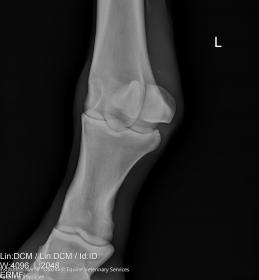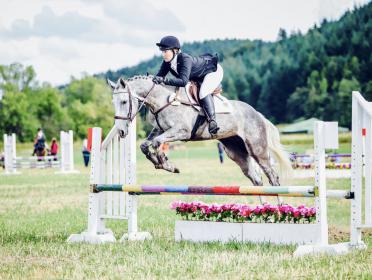Obviously, I don’t post very often, but I felt I needed to ask as many people as possible for their honest opinion and experience.
Here’s the story: I purchased a 3yo gelding from the track last October. He was sound at the PPE, very sound. No rads done at the time (wouldn’t make that mistake again). Fast forward almost one year later: he’s just debuted at the BN level in eventing, going really well, bright future ahead of him. Former Olympic riders–now clinicians–are asking about his pedigree and saying nice things about him.
Then, one morning this September he exits his stall with a puffy left hind leg. OK, I think, he just knocked himself. He’s 4, these things happen. Ice, rest, poultice, etc. Take him to the vet after 3 days and it hasn’t resolved, vet finds him sound, but still a little puffy and says stall rest, ice, bute. Once week later, still puffy, return to vet. Rode the night before, he was ostensibly sound. Now, at vet, he flexes 2/5 on the left hind after fetlock flexion. Vet takes rads, finds old, round, very small chip that appears to have come from the front of the fetlock and migrated around to the back. Ultrasound reveals the chip may be in the lining of the joint, but hard to tell. Inject with steroid and HA, 7 days stall rest, images sent to university vet for consult. Uni vet says no, no reason to operate, too hard to find in the synovium. Maintenance is prescribed. Return to vet after the 7 days for re-check. He’s cold, mostly tight, and sound.
After a bit of tuning up I take him to another little BN derby. He’s great, but I’m still seeing this tiny bit of puffiness, like windpuffs, just north of the joint. Vet says that’s probably normal. Leg is staying cool and he’s staying sound, so all is well. Two days ago I take him to a dressage clinic. We walk and trot, not hard, not too many circles but some, and a little tiny bit of canter–like 3 circles each way and we’re done. He didn’t break a sweat, I can say that. Next morning I’m preparing him to go x-country schooling and he comes in from pasture with one very cool right hind, and one very warm left hind. A little more puffy than usual, too. I lunge him and he looks wobbly to me. What in the actual ____!!! Call vet and set appointment for next Monday. Throw him back out into pasture. Cry a little. Trainer says he needs 6-8 weeks of pony jail (stall rest), that’s what her money is on. Who knows what vet will say.
What am I dealing with here??? Will he ever be sound again? Will stall rest really help if there’s a bone chip aggravating the joint?? Do I get a second opinion on surgery? Do I throw money at PRP and IRAP therapies? Do those things even work? Does he need to be bubble wrapped and kept in a stall for the rest of his competitive life? Please tell me some of you have had similar problems and they got fixed and now your perfect little baby horse is eventing at the advanced level. That’s all I really want to hear (OK, not really.) But seriously, what do I do? WWYD?




